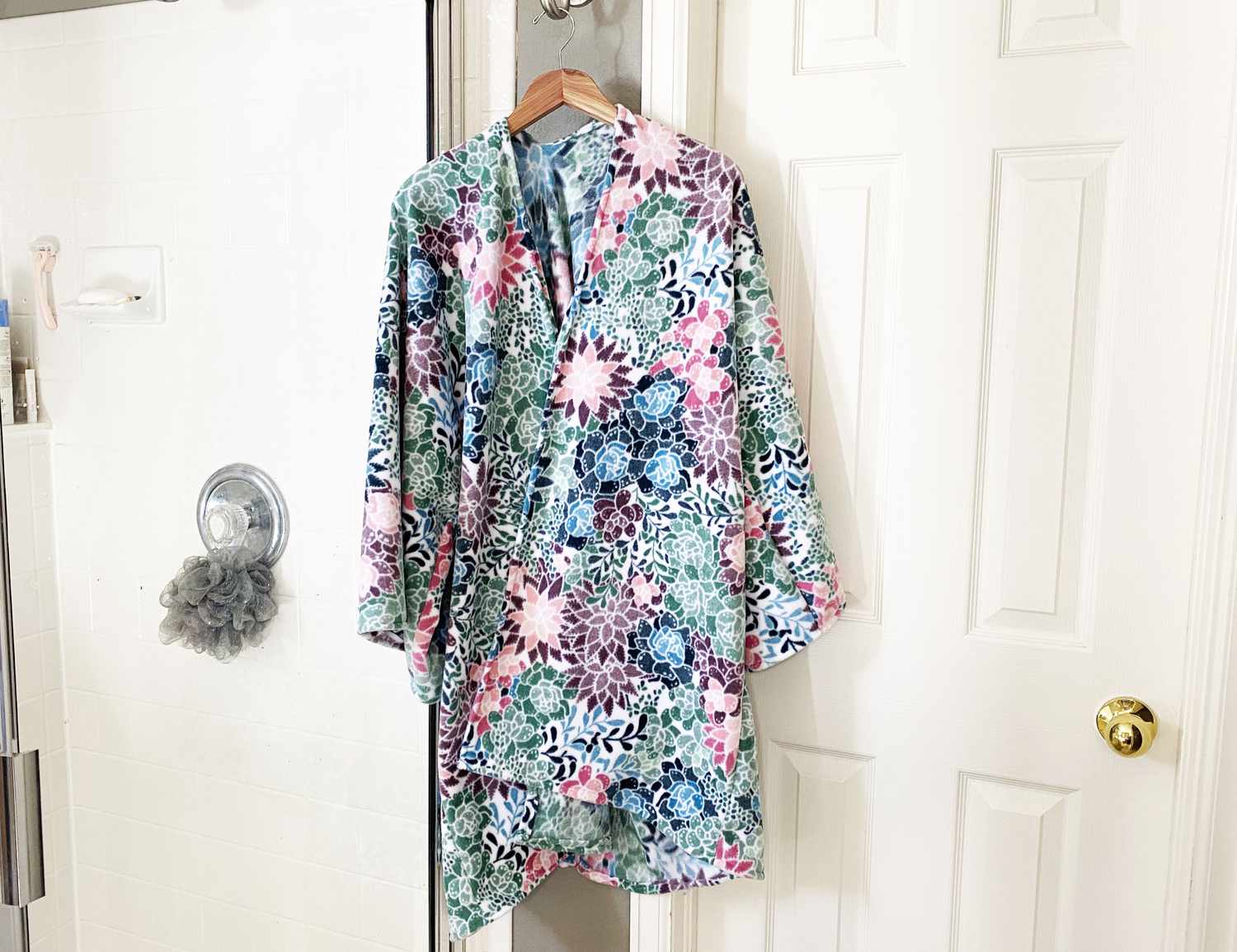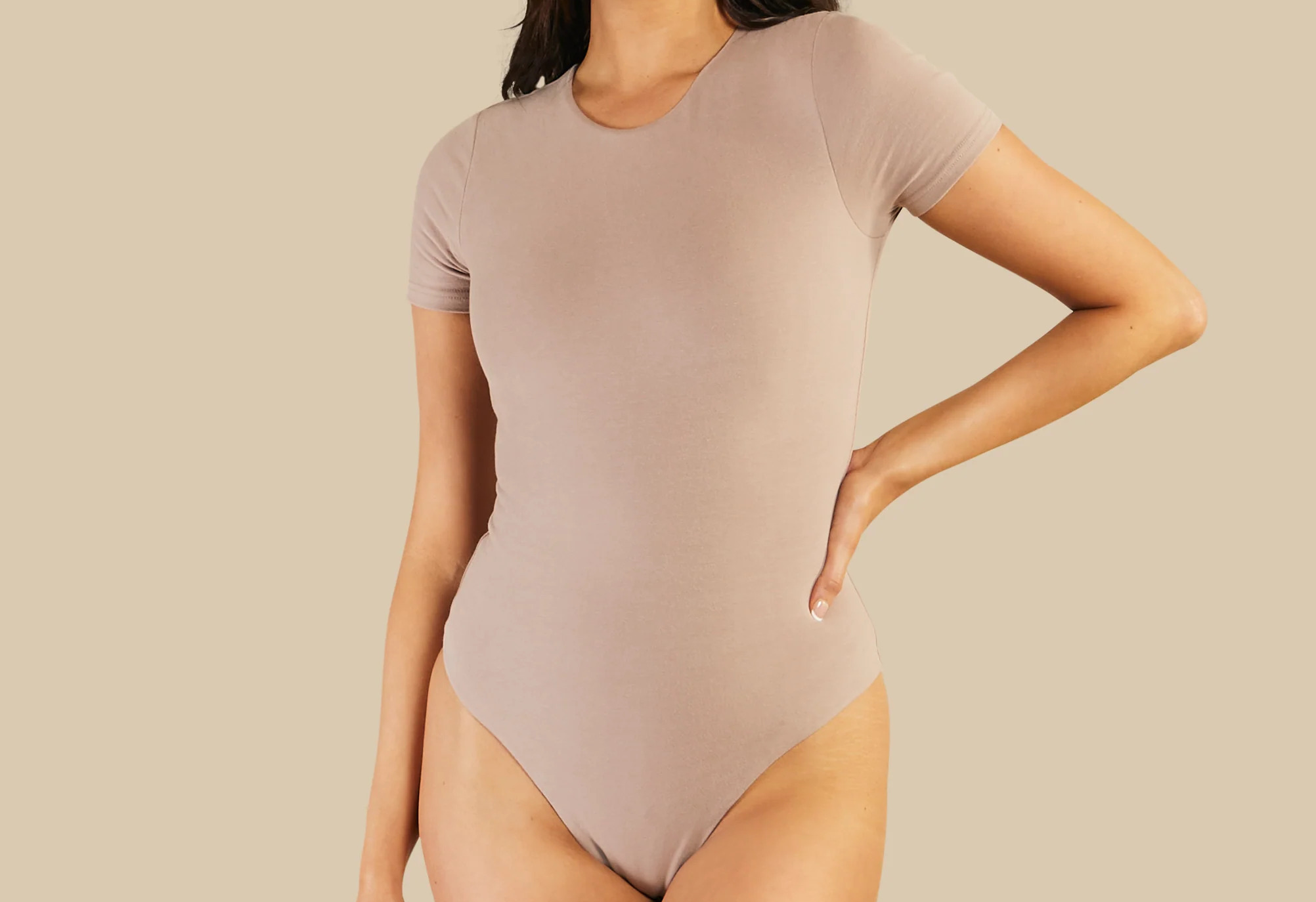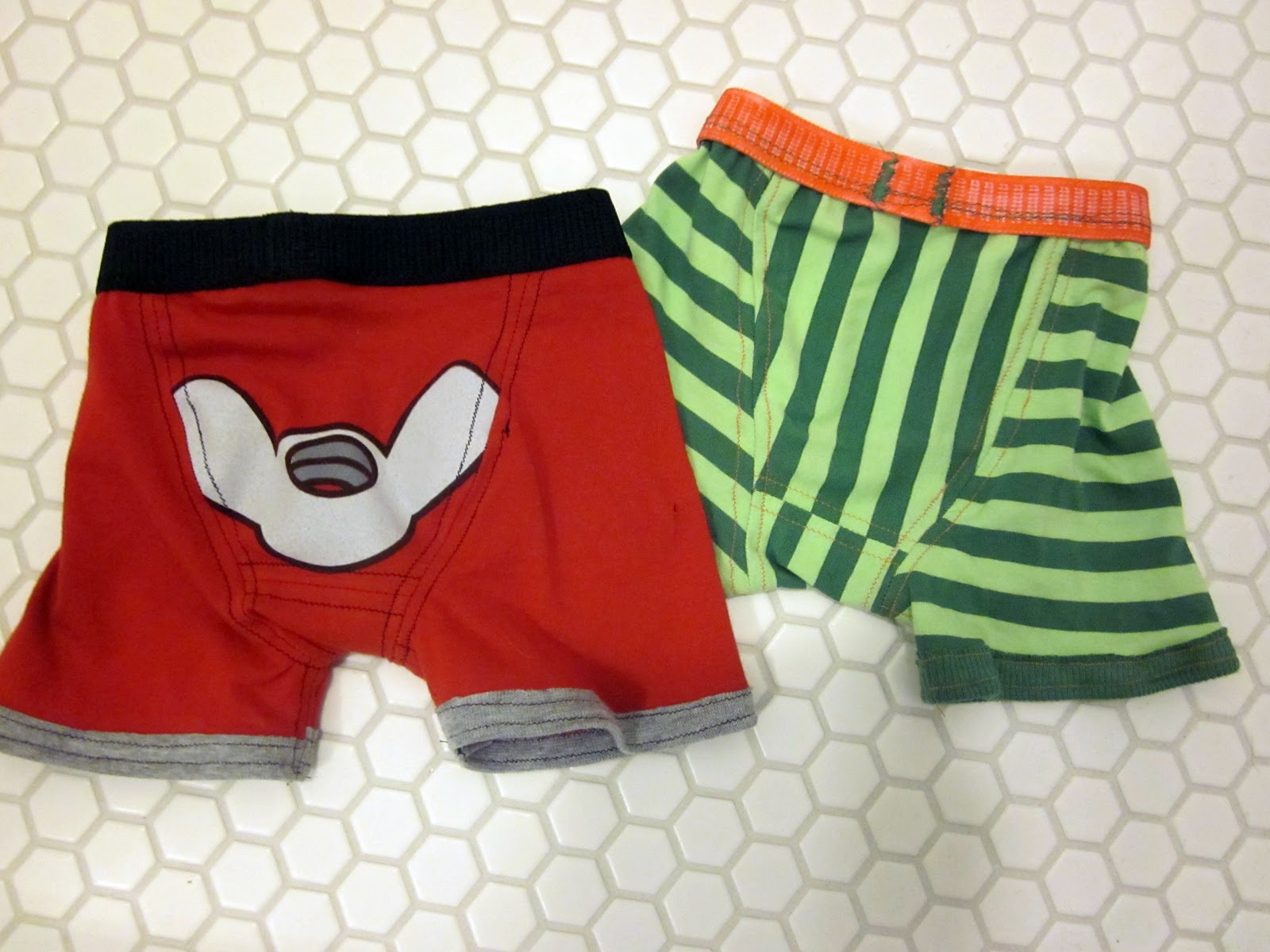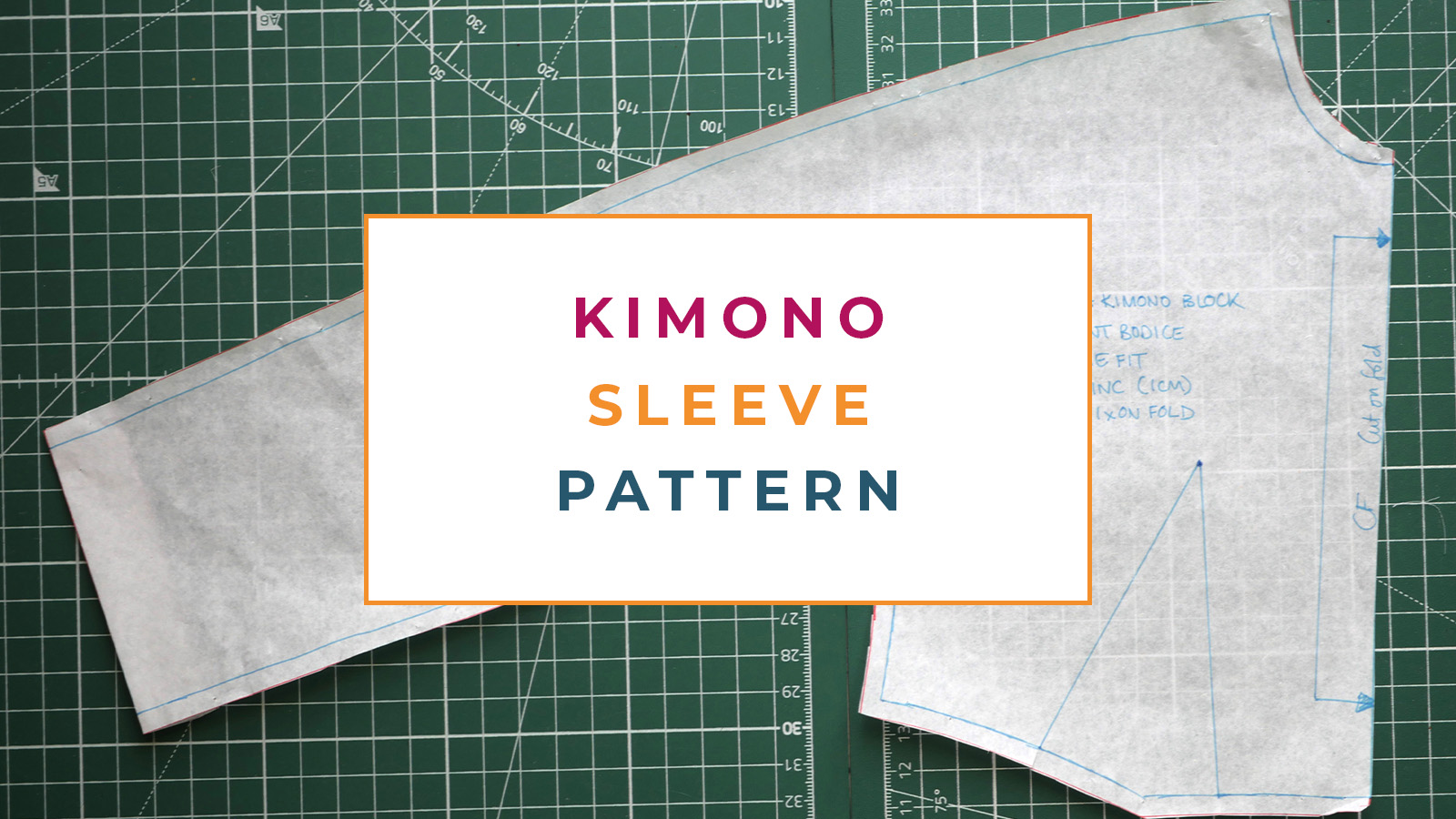Home>How-to Guides>For Women>How To Make A Swimsuit Smaller


For Women
How To Make A Swimsuit Smaller
Modified: August 2, 2023
Discover effective techniques for women to make their swimsuits smaller and achieve a perfect fit. Follow our step-by-step guide and rock your swimsuit confidently.
(Many of the links in this article redirect to a specific reviewed product. Your purchase of these products through affiliate links helps to generate commission for Under-tec.com, at no extra cost. Learn more)
Table of Contents
Introduction
Welcome to the world of swimsuit alterations! Whether you’ve recently purchased a new swimsuit or found an old one that doesn’t quite fit right, you don’t have to settle for an uncomfortable or ill-fitting swimsuit. With a little bit of know-how, you can easily make a swimsuit smaller to achieve the perfect fit that accentuates your curves and makes you feel confident.
Understanding how to make a swimsuit smaller is a valuable skill that can save you time and money. Instead of going through the hassle of shopping for a new swimsuit or spending a fortune on alterations at a tailor, you can take matters into your own hands and customize your swimsuit to fit your body like a glove.
In this article, we will guide you through the step-by-step process of altering a swimsuit to make it smaller. From assessing the fit to making the necessary adjustments, we’ll cover everything you need to know to achieve a flattering and comfortable swimsuit.
Before we dive into the details, it’s important to note that altering a swimsuit can be a bit challenging, especially if you’re not an experienced seamstress. However, with patience, practice, and these helpful tips, you’ll be able to tailor your swimsuit to your desired fit.
So, grab your swimsuit, get ready to unleash your creativity, and let’s learn how to make a swimsuit smaller!
Understanding the Swimsuit
Before you begin altering your swimsuit, it’s vital to have a good understanding of its construction. Swimsuits come in various styles, including one-piece, two-piece, bikinis, tankinis, and more. Each style has different components, such as straps, cups, and closures, that require specific adjustments to achieve the desired fit.
Take a close look at your swimsuit and identify its key features. Note the type of straps it has – are they adjustable or fixed? Is there an underwire or padding in the cups? Are there any closures, such as hooks or ties? Understanding these elements will help you determine the areas that need alteration and the techniques required to achieve the desired results.
In addition to understanding the various components, it’s essential to consider the fabric of your swimsuit. Swimsuits are typically made of stretchy and durable materials, such as nylon, spandex, or polyester blends. Keep in mind that altering a swimsuit made of these fabrics requires a different approach than altering regular clothing.
Stretchy fabrics require stretch stitches or narrow hems that will allow the fabric to retain its elasticity. It’s important to use the appropriate sewing techniques to ensure that your altered swimsuit maintains its flexibility and durability in the water.
Lastly, consider the overall design and style of your swimsuit. Certain styles may be easier to alter than others. For example, a one-piece swimsuit with adjustable straps and a simple silhouette may be simpler to modify compared to a complex bikini with multiple straps and intricate details.
Understanding your swimsuit’s construction, fabric, and design will help you approach the alteration process with a clearer perspective. It will enable you to make informed decisions and choose the most suitable methods to achieve the desired fit for your swimsuit.
Assessing the Fit
Before you start making any alterations to your swimsuit, it’s crucial to assess its current fit. Understanding how the swimsuit fits on your body will help you identify the specific areas that need adjustment.
First, put on the swimsuit and stand in front of a mirror. Take note of any areas where the swimsuit feels too loose or too tight. Common areas that may require alterations include the straps, the sides, the neckline, and the length.
When examining the straps, ensure that they are not digging into your shoulders or slipping off. Adjustable straps can be tightened or loosened to achieve the ideal fit. If necessary, mark the desired strap length with a pin or a fabric marker for reference during the alteration process.
Next, assess the fit around the sides of the swimsuit. Are there any gaps or wrinkles indicating that the suit is too big? If so, these areas will need to be taken in to create a more snug fit. On the other hand, if the swimsuit feels too tight, you may need to let out the sides slightly to ensure comfort.
Moving to the neckline, consider the coverage and shape. Does the neckline flatter your bust and complement your body shape? Depending on personal preference, you may want to alter the neckline to make it higher, lower, or reshape it to achieve the desired look.
Lastly, evaluate the length of the swimsuit. If the suit feels too long, you may want to shorten it for a more flattering appearance. Conversely, if you find it too short, you can extend the length by adding additional fabric or using decorative trims.
Once you have thoroughly assessed the fit and pinpointed the areas that require adjustment, you’ll have a clearer idea of the alterations needed to achieve the perfect fit for your swimsuit. Taking the time to assess the fit will ensure that you have a well-fitting swimsuit that makes you feel confident and comfortable.
Preparation for Alterations
Now that you’ve assessed the fit of your swimsuit and identified the areas that need adjustment, it’s time to prepare for the alterations. Proper preparation is key to achieving successful and precise modifications to your swimsuit.
First and foremost, gather all the necessary tools and supplies for the alteration process. This may include a sewing machine, thread that matches the color of your swimsuit, sewing needles, scissors, pins or clips, measuring tape, and any additional materials needed for specific alterations like elastic or bra cups.
It’s also essential to select the appropriate thread for your swimsuit. Opt for a thread that has good stretch and matches the color of your swimsuit as closely as possible. This will ensure that the altered areas blend seamlessly with the rest of the swimsuit.
Before making any alterations, it’s advisable to test your sewing machine and stitches on a scrap piece of fabric or a discarded section of your swimsuit. This allows you to check the tension, stitch quality, and ensure that the machine is functioning correctly.
Take the time to carefully read and understand the instructions for each specific alteration technique you plan to use. Whether it’s adjusting straps, taking in the sides, or hemming the bottom, having a clear understanding of the steps involved will help you execute the alterations accurately.
Ensure that the area you’ll be altering is clean and free from any moisture or debris. If necessary, gently hand wash and dry the swimsuit before proceeding with the alterations. This will prevent any dirt or stains from affecting the quality of the alterations and maintain the longevity of your swimsuit.
Lastly, stay patient and take your time throughout the alteration process. Making alterations to a swimsuit requires precision and attention to detail. Rushing can lead to mistakes and potentially compromise the fit and overall appearance of the swimsuit.
By properly preparing and gathering the necessary materials, familiarizing yourself with the alteration techniques, and ensuring the cleanliness of the swimsuit, you’ll be well-prepared to begin the process of making your swimsuit smaller.
Adjusting the Straps
One of the most common areas that may require alteration in a swimsuit is the straps. Ill-fitting or uncomfortable straps can easily be adjusted to achieve the perfect fit.
If your swimsuit has adjustable straps, start by putting on the swimsuit and determining the desired strap length. Stand in front of a mirror and adjust the straps while taking note of the ideal position where they sit comfortably on your shoulders.
Once you’ve determined the desired length, mark the straps with a pin or a fabric marker for reference during the alteration process.
To adjust the straps, follow these steps:
- Locate the area where the straps are attached to the swimsuit. This is usually at the back of the swimsuit or near the shoulders.
- Using a seam ripper or a small pair of scissors, carefully remove the stitching that secures the straps to the swimsuit. Be cautious not to damage the fabric.
- Once the straps are detached, adjust them to the desired length. If you need to make them shorter, fold the excess fabric and secure it with pins or clips. If you need to make them longer, you may need to add additional fabric or extensions.
- Using a sewing machine or needle and thread, sew the adjusted straps back onto the swimsuit. Make sure to use a stretch stitch or a narrow zigzag stitch to maintain the elasticity of the fabric.
- Try on the swimsuit again to ensure that the adjusted straps provide the desired fit. Make any additional adjustments if necessary.
Adjusting the straps can greatly improve the fit and comfort of your swimsuit. It allows you to customize the length of the straps to match your body and provides the necessary support without digging into your shoulders or sliding off.
Remember, take your time and sew carefully to ensure that the straps are securely attached and won’t come undone during wear. With properly adjusted straps, your swimsuit will provide the perfect fit for a confident and comfortable swimming experience.
Taking in the Sides
If your swimsuit feels loose or baggy around the sides, taking in the sides can help achieve a more snug and customized fit. This alteration technique is particularly useful for one-piece swimsuits or tankinis.
To take in the sides of your swimsuit, follow these steps:
- Put on the swimsuit and stand in front of a mirror. Identify the areas where the swimsuit feels loose or needs to be taken in.
- Using pins or clips, fold the excess fabric from both sides of the swimsuit towards the back. Pin or clip the folded fabric to create a temporary seam line.
- Take off the swimsuit and lay it flat on a surface. Use a fabric marker or a disappearing ink pen to trace along the temporary seam line created by the pins or clips. This will serve as a guide for the actual alteration.
- Using a sewing machine or needle and thread, sew along the traced seam line. Use a stretch stitch or a narrow zigzag stitch to maintain the elasticity of the fabric.
- Trim any excess fabric close to the new seam line, leaving a small seam allowance for durability.
- Try on the swimsuit again to ensure that the sides are now snug and provide the desired fit. Make any additional alterations if necessary.
Taking in the sides of a swimsuit can help eliminate any bagginess or looseness, creating a sleek and flattering silhouette. However, it’s important to be cautious and avoid taking in too much fabric, as it may restrict movement or cause discomfort.
Remember to sew slowly and carefully to ensure that the stitches are secure and won’t come undone during wear. With the sides properly taken in, your swimsuit will fit snugly and provide the confidence you desire when hitting the beach or pool.
Reshaping the Neckline
The neckline of a swimsuit plays a significant role in its overall design and can greatly impact how it flatters your body shape. If you’re looking to modify the neckline of your swimsuit, whether it’s to enhance your bust or create a different style, reshaping the neckline can help you achieve the desired look.
Here’s how you can reshape the neckline of your swimsuit:
- Put on the swimsuit and stand in front of a mirror. Determine the shape and style you want for the neckline.
- Using pins or clips, mark the areas where you want the new neckline to be. Take caution not to poke yourself with the pins or clips.
- Take off the swimsuit and lay it flat on a surface. Use a fabric marker or a disappearing ink pen to trace along the marked areas, creating a new neckline.
- Using sharp scissors, carefully cut along the traced lines to shape the new neckline. Take your time and cut slowly to ensure precision.
- If necessary, fold the raw edges of the new neckline towards the inside of the swimsuit and secure them with pins or clips.
- Using a sewing machine or needle and thread, sew a narrow hem along the folded edges to secure them in place. Alternatively, you can use a stretch binding or decorative trim to finish the new neckline.
- Try on the swimsuit again to ensure that the reshaped neckline meets your expectations. Make any additional modifications if needed.
Reshaping the neckline of your swimsuit allows you to customize the style and improve the overall look. Whether you prefer a deeper V-neck, a sweetheart neckline, or any other design, reshaping the neckline can give your swimsuit a unique and personalized touch.
Remember to always sew carefully and use appropriate stitching techniques for the fabric of your swimsuit. With the neckline reshaped to your liking, your swimsuit will be transformed into a stylish and flattering piece that accentuates your best features.
Shortening the Length
If your swimsuit feels too long or hits at an unflattering place on your body, shortening the length can help achieve a more balanced and appealing look. This alteration technique is commonly used for one-piece swimsuits or tankinis.
Here’s how you can shorten the length of your swimsuit:
- Put on the swimsuit and stand in front of a mirror. Determine the desired length you want to achieve and mark it with pins or clips.
- Take off the swimsuit and lay it flat on a surface. Measure and mark the new length using a fabric marker or a disappearing ink pen.
- Carefully cut along the marked line to remove the excess fabric. Remember to cut conservatively to ensure that you don’t make the swimsuit too short.
- If necessary, fold the raw edge of the fabric towards the inside of the swimsuit and secure it with pins or clips.
- Using a sewing machine or needle and thread, sew a narrow hem along the folded edge to finish the new length. Ensure to use a stretch stitch or a narrow zigzag stitch to maintain the elasticity of the fabric.
- Try on the swimsuit again to check the new length and make any minor adjustments if needed.
Shortening the length of your swimsuit can create a more balanced and visually appealing appearance, as well as prevent any potential tripping or discomfort while swimming or lounging by the pool.
When altering the length, it’s always better to cut conservatively to avoid making the swimsuit too short. You can always trim off more fabric if needed, but it’s difficult to add it back once it’s been removed.
Remember to sew carefully and accurately to ensure that the new length is securely hemmed and won’t come undone during wear. With the length shortened to your preference, your swimsuit will fit impeccably and showcase your style and confidence.
Hemming the Bottom
Hemming the bottom of your swimsuit is an essential alteration to achieve a polished and finished look. Whether you need to shorten the leg openings or create a clean hem, this technique ensures that your swimsuit fits well and maintains its durability.
Here’s how you can hem the bottom of your swimsuit:
- Put on the swimsuit and stand in front of a mirror. Determine the desired length for the leg openings or the bottom hem. Mark it with pins or clips.
- Take off the swimsuit and lay it flat on a surface. Measure and mark the new length using a fabric marker or a disappearing ink pen.
- Carefully cut along the marked line to remove the excess fabric. If necessary, fold the raw edge of the fabric towards the inside of the swimsuit and secure it with pins or clips.
- Using a sewing machine or needle and thread, sew a narrow hem along the folded edge to secure it in place. Make sure to use a stretch stitch or a narrow zigzag stitch to maintain the elasticity of the fabric.
- Repeat the hemming process for all the leg openings or the bottom hem of the swimsuit, ensuring consistency in the width of the hem.
- Try on the swimsuit again to check the length and the overall appearance. Make any final adjustments if needed.
Hemming the bottom of your swimsuit not only gives it a professional finish but also ensures that the fabric won’t fray or unravel with wear and wash. It provides a clean and neat edge that enhances the overall look and durability of your swimsuit.
When hemming, it’s important to sew accurately and securely to prevent any loose threads or stitches that may come undone. Choosing the appropriate stitch and thread for stretchy fabrics will help maintain the flexibility and integrity of the swimsuit.
With the bottom hemmed, your swimsuit will have a polished and tailored appearance, allowing you to feel confident and comfortable while enjoying your time at the beach or by the pool.
Finishing Touches
Once you have made the necessary alterations to your swimsuit, there are a few final touches that can elevate the overall look and functionality of the garment.
If you have taken in the sides or adjusted the straps, it’s a good idea to secure any excess fabric with a few stitches to prevent it from shifting or poking out during wear. This will ensure a seamless and comfortable fit.
Additionally, if your swimsuit has any closures such as hooks or ties, make sure they are securely fastened and can withstand the movements and activities you’ll be engaging in while wearing the swimsuit.
If you find that your swimsuit lacks support in the bust area, you may consider adding bra cups or padding. These can be easily inserted between the lining and outer fabric to enhance shape and provide extra support.
Furthermore, if you want to add a personal touch or enhance the aesthetics of your swimsuit, you can consider adding decorative elements like beads, appliques, or trims. Just ensure that these embellishments are securely attached and won’t come off during swimming or washing.
Before you put your altered swimsuit to use, it’s important to test it in water to ensure that it fits comfortably and functions as intended. This will give you confidence that the alterations have created a well-fitting swimsuit that is both stylish and practical.
Lastly, consider properly caring for your altered swimsuit. Follow the care instructions on the label and rinse it thoroughly after each use to remove chlorine, salt, and sunscreen residue. Gently hand wash or use the delicate cycle on your washing machine to prevent any damage to the fabric and alterations.
By paying attention to these finishing touches and maintaining the quality and fit of your swimsuit, you can enjoy your altered creation for many seasons to come.
Conclusion
Congratulations! You have successfully learned how to make your swimsuit smaller through the art of alterations. By assessing the fit, adjusting the straps, taking in the sides, reshaping the neckline, shortening the length, and hemming the bottom, you have transformed your swimsuit into a personalized and well-fitting garment.
Remember, altering a swimsuit may require some patience and practice, especially if you’re new to sewing or tailoring. Take your time, follow the step-by-step instructions, and don’t be afraid to experiment and make adjustments along the way.
In this journey of altering your swimsuit, you’ve embraced your creativity and unleashed your inner fashion designer. You’ve honed your skills and gained the confidence to tailor your swimsuit to your unique body shape and style preferences.
Now that you have a beautifully altered swimsuit, it’s important to care for it properly. Rinse it after each use, follow the care instructions, and store it in a cool and dry place to maintain its quality and longevity.
Remember, alterations are not limited to making a swimsuit smaller. You can also apply these techniques to make a swimsuit larger or modify other aspects according to your personal preferences.
Now it’s time to hit the beach or pool with your newly altered swimsuit. Embrace your confidence, flaunt your style, and enjoy each moment in a swimsuit that fits you perfectly.
So, gather your tools, unleash your creativity, and dive into the world of swimsuit alterations. With your newfound knowledge, you have the power to transform any swimsuit into a one-of-a-kind masterpiece that makes you look and feel amazing.










